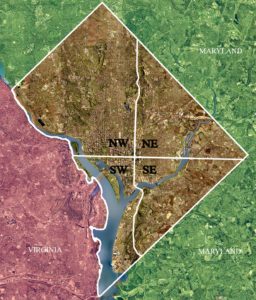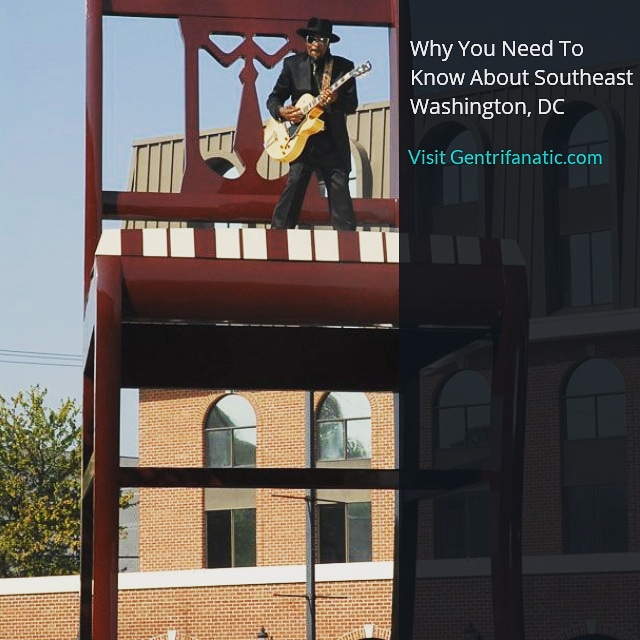This is no time to engage in the luxury of cooling off or to take the tranquilizing drug of gradualism.
-MLK, Washington, DC, 1968
Gentrifanatics!
Today I bring you another spotlight piece. This one hits close to home for me because I’ve lived close to this area for quite a while.
I’ve noticed that as real estate investors we tend to become so focused on personal benefit that we become dismissive of the socioeconomic conditions that led some of these “less desirable” neighborhoods to become “bad for business”.
You’ve heard the terms: the hood, the ghetto, high crime area, etc…hearing these terms from people who haven’t educated themselves can be absolutely infuriating!
Every real estate market has a history. Its unfortunate but many of the markets that many investors dub “war zones” have been the plagued by demographically biased laws which resonate today.
Unfair housing laws and their contemporary ramifications seem to be a taboo topic amongst real estate investors. Before looking at modern statistics, its important to take a historical view of why we got here in the first place.
Historical Southeast Washington, DC
Geography
Washington DC is divided into four quadrants: Northeast, Northwest, Southwest, and Southeast.

Our U.S. Capitol is at the center of the four quadrants.
Southeast DC is also somewhat divided in the sense that the Anacostia River bisects Southeast.
Demographics and Politics
Demographically the section of Southeast above the Anacostia River is predominantly white. The section of southeast below the Anacostia River is predominantly black.
It should be noted that according to a 2016 census; DC on a whole is 46% black and 36% white.
Southeast DC government consists of large portions of DC Wards 6, 7, and all of Ward 8.
Late legendary former Mayor of DC Marion Barry served as a DC Councilmember for Ward 8 until his passing in 2014.
A 2015 population statistic noted that 226,084 resided in Southeast DC.

Estimates from December 2017 show that Wards 6, 7, and 8 have a combined labor force of 123,084 people.
Unemployment rates break down as follows:
Ward 6 – 4.9% (December 2017)
Ward 7 – 9.9% (December 2017)
Ward 8 – 12.8% (December 2017)
Washington DC – 5.7% (March 2018)
National Average – 4.1% (March 2018)
It’s worth noting that Ward 6 encompasses all of the area of Southeast DC above the Anacostia River.
Wards 7 and 8 represent the areas below the Anacostia River.
Ward 7 is home to the Hillcrest neighborhood. Hillcrest was the former home of former Mayor Marion Barry. Also its the current home of former Mayor and current Ward 7 Councilmember Vincent Gray.
Suburban, tree lined neighborhoods like Hillcrest are a far cry from what the average person thinks of when they envision Southeast DC.
When it comes to the stereotypical view of Southeast DC most likely think of the Anacostia neighborhood.
While this neighborhood was recently (2016) listed as having a crime rate 223% higher than the national average it holds deep historical significance.
Anacostia
Located in Ward 8, Anacostia is named after the a Nacochtank Native Americans who first settled along the river.
After the Native Americans were forced northward through conflict Anacostia became one of the first suburbs of Washington DC.
Looking back at 1854 the sale, rent, or lease of any property was restricted; no blacks or Irish were allowed.
However in 1877 abolitionist Frederick Douglass purchased a home there and resided in it until his death in 1895. The home remains a historical site in the neighborhood.
Uniontown in Anacostia was home to white workers employed across the river at the Navy Yard. Hillcrest was a black neighborhood where newly freed slaves settled and became well off.
Slavery was abolished in the DC on April 16, 1862. Freed slaves sought the protection of the Union Army encamped along the Anacostia River. After the war Barry Farm attracted many more freed slaves.
By 1869 more than 500 black families owned homes in the Barry Farm area of southeast DC.
According to an 1880 census, Anacostia was home to carpenters, blacksmiths, boilermakers, printers, plumbers, chainmakers, shipmakers, enlisted and commissioned Naval personnel, and laborers. This all suggests Navy Yard employment.
History of Bias
Despite the initial restrictive covenants prohibiting the sale, rental or lease of property to “any negro, mulatto, or person of African blood,” approximately 15 percent of the residents of Uniontown were black.
Between 1933 and 1936 President Franklin Delano Roosevelt enacted “The New Deal”. This unleashed mortgage credit to most Americans.
However, neighborhoods that had a heavy concentration of blacks were deemed uninsurable, too risky, and “red lined” on maps by the newly created Federal Housing Administration (FHA).
FHA created a situation where black neighborhoods could not benefit from the mortgage credit created by the new deal.
Being unable to get a mortgage is significant because throughout American history; when it comes to wealth, equity from mortgages accounts for two thirds of the average Americans net worth.
Related Posts:
Why Real Estate Can Beat Bitcoin and the Stockmarket in a Fist Fight
5 Things I Didn’t Know About Wealth That TOTALLY CHANGED My Life!!!
Black families unable to take advantage of this because of biased governmental practices missed out on decades of home equity growth.
This equity could have made black descendants extremely wealthy had it been passed on to today.
Housing discrimination would not be officially outlawed until 1968, but this did not end the unfair practices.
By 1970 average homeownership in America was 62.9%; but for black families the number dipped to just 41.6%.
Not until President Clinton’s administration in the 1990’s when the government stated that it was going to end housing discrimination.
However, what this push led to was an uptick in subprime mortgages and predatory. Blacks were twice as likely to be victims of subprime mortgages at 52.9% compared to 26.1% for whites.
Yes, these are the same subprime mortgages that are largely to blame for the 2008 financial collapse in America.
Some may speculate that if blacks had better credit they would get better mortgages, but studies show that 1 out of every 5 black borrowers still got a subprime loan.
Up until about the 1960’s Anacostia was approximately 87% white. During the 1940’s through the 1970’s racial unrest was heavy in Anacostia (as with much of the US). In 1949 a riot at a recently desegregated pool resulted in several injuries and arrests.
In the 1960s the Anacostia freeway (I-295) was built. This along with the construction of numerous public housing units resulted in much of the white population relocating to the suburbs.
Although the roads connected Southeast to the rest of DC this detracted from the historic character of Anacostia.
Gentrification in the northern areas of DC pushed many people into poorly constructed public housing that had once been open fields in Anacostia.
This influx of new residents highly concentrated in the relatively small area of Anacostia stressed the areas resources.
Today Anacostia is nearly 99% black.
Real Estate Outlook for Southeast DC:
There are several revitalization projects slated for Southeast. Perhaps the biggest is the Anacostia MLK Gateway project.
Optimistically this project proposes to put small to medium scaled commercial and mixed-use developments in the Good Hope Road and MLK Avenue areas of Southeast DC.
Over a 15 year period the Gateway project plans to create 224 jobs and haul in $25M in tax revenue.
A “Cultural Heart” as well as 91 residential units with ununobstructed DC views are in the plans.
Saint Elizabeth’s hospital in southest DC is slated to become the Department of Homeland Security’s new headquarters. Substantial construction is already underway.
Events D.C.’s $65M sports arena is set to open in southeast soon, right where the old Saint Elizabeth’s hospital once stood.
This 120,000 square foot year round multipurpose facility, adjacent to the Congress Heights Metro station, has the potential to draw nearly 400,000 attendees per year!
Not only will this be the training facility for the Washington Wizards, but also the home of the Washington Mystics, and able to host concerts, boxing matches, and cultural events.
Analysts expect the arena to generate $90M over 20 years. It will also be the catalyst for a 2 million square foot development including 100 townhomes, 200 multifamily units, and a 250,000 square foot office development.
All of this promising development is outstanding. People from all walks of life should consider investing in southeast DC, not just with their money, but with their patronage, and respect.
Southeast is not the next gentrifying hot bed aimed at making the rich richer. As responsible investors we need to recognize the historic significance that black Americans have in Anacostia and southeast DC. This culture should not be allowed to become overshadowed or drowned out by the newest trends. Instead, those coming to southeast should learn about, and understand its history. Only then should they insert themselves in the existing culture, perpetually paying homage to the generations of Americans who made this area so special.




